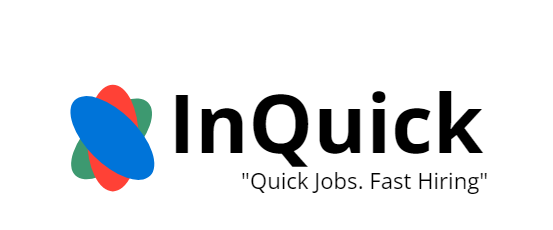- Afghanistan
- Åland Islands
- Albania
- Algeria
- American Samoa
- Andorra
- Angola
- Anguilla
- Antarctica
- Antigua and Barbuda
- Argentina
- Armenia
- Aruba
- Australia
- Austria
- Azerbaijan
- Bahamas
- Bahrain
- Bangladesh
- Barbados
- Belarus
- Belgium
- Belize
- Benin
- Bermuda
- Bhutan
- Bolivia
- Bonaire, Sint Eustatius, and Saba
- Bosnia and Herzegovina
- Botswana
- Bouvet Island
- Brazil
- British Indian Ocean Territory
- British Virgin Islands
- Brunei
- Bulgaria
- Burkina Faso
- Burundi
- Cambodia
- Cameroon
- Canada
- Cape Verde
- Cayman Islands
- Central African Republic
- Chad
- Chile
- China
- Christmas Island
- Cocos [Keeling] Islands
- Colombia
- Comoros
- Cook Islands
- Costa Rica
- Croatia
- Cuba
- Curaçao
- Cyprus
- Czech Republic
- Congo - Kinshasa
- Denmark
- Djibouti
- Dominica
- Dominican Republic
- Timor-Leste
- Ecuador
- Egypt
- El Salvador
- Equatorial Guinea
- Eritrea
- Estonia
- Ethiopia
- Falkland Islands
- Faroe Islands
- Fiji
- Finland
- France
- French Guiana
- French Polynesia
- French Southern Territories
- Gabon
- Gambia
- Georgia
- Germany
- Ghana
- Gibraltar
- Greece
- Greenland
- Grenada
- Guadeloupe
- Guam
- Guatemala
- Guernsey
- Guinea
- Guinea-Bissau
- Guyana
- Haiti
- Heard Island and McDonald Islands
- Honduras
- Hong Kong SAR China
- Hungary
- Iceland
- India
- Indonesia
- Iran
- Iraq
- Ireland
- Isle of Man
- Israel
- Italy
- Côte d’Ivoire
- Jamaica
- Japan
- Jersey
- Jordan
- Kazakhstan
- Kenya
- Kiribati
- Kosovo
- Kuwait
- Kyrgyzstan
- Laos
- Latvia
- Lebanon
- Lesotho
- Liberia
- Libya
- Liechtenstein
- Lithuania
- Luxembourg
- Macau SAR China
- Macedonia
- Madagascar
- Malawi
- Malaysia
- Maldives
- Mali
- Malta
- Marshall Islands
- Martinique
- Mauritania
- Mauritius
- Mayotte
- Mexico
- Micronesia
- Moldova
- Monaco
- Mongolia
- Montenegro
- Montserrat
- Morocco
- Mozambique
- Myanmar [Burma]
- Namibia
- Nauru
- Nepal
- Netherlands
- Netherlands Antilles
- New Caledonia
- New Zealand
- Nicaragua
- Niger
- Nigeria
- Niue
- Norfolk Island
- North Korea
- Northern Mariana Islands
- Norway
- Oman
- Pakistan
- Palau
- Palestinian Territories
- Panama
- Papua New Guinea
- Paraguay
- Peru
- Philippines
- Pitcairn Islands
- Poland
- Portugal
- Puerto Rico
- Qatar
- Congo - Brazzaville
- Réunion
- Romania
- Russia
- Rwanda
- Saint Barthélemy
- Saint Helena
- Saint Kitts and Nevis
- Saint Lucia
- Saint Martin
- Saint Pierre and Miquelon
- Saint Vincent and the Grenadines
- Samoa
- San Marino
- São Tomé and Príncipe
- Saudi Arabia
- Senegal
- Serbia
- Serbia and Montenegro
- Seychelles
- Sierra Leone
- Singapore
- Sint Maarten
- Slovakia
- Slovenia
- Solomon Islands
- Somalia
- South Africa
- South Georgia and the South Sandwich Islands
- South Korea
- South Sudan
- Spain
- Sri Lanka
- Sudan
- Suriname
- Svalbard and Jan Mayen
- Swaziland
- Sweden
- Switzerland
- Syria
- Taiwan
- Tajikistan
- Tanzania
- Thailand
- Togo
- Tokelau
- Tonga
- Trinidad and Tobago
- Tunisia
- Turkey
- Turkmenistan
- Turks and Caicos Islands
- Tuvalu
- U.S. Virgin Islands
- Uganda
- Ukraine
- United Arab Emirates
- United Kingdom
- United States
- U.S. Minor Outlying Islands
- Uruguay
- Uzbekistan
- Vanuatu
- Vatican City
- Venezuela
- Vietnam
- Wallis and Futuna
- Western Sahara
- Yemen
- Zambia
- Zimbabwe
How to Write an Impressive Resume: Tips for Job Seekers ✍️

How to Write an Impressive Resume: Tips for Job Seekers ✍️
How to Write an Impressive Resume: Tips for Job Seekers ✍️
Creating a standout resume is crucial when applying for jobs. Your resume serves as your personal marketing document and often forms the first impression potential employers have of you. An impressive resume can help you secure interviews, land job offers, and ultimately advance your career. Whether you're a fresh graduate or an experienced professional, the tips below will help you craft a resume that grabs attention and highlights your skills.
1. Start with a Strong Resume Header 📝
Why It’s Important:
Your resume header provides essential contact information, making it easy for potential employers to reach you.
How to Create a Strong Header:
- Include your name, phone number, professional email address, and LinkedIn profile (if applicable).
- Add location (city and state) if relevant, but avoid including your full address for privacy reasons.
- Use a professional email address — avoid using informal or outdated email addresses.
Example:
yamlJohn Doe Phone: (123) 456-7890 | Email: john.doe@email.com | LinkedIn: linkedin.com/in/johndoe Location: New York, NY
2. Craft a Compelling Resume Summary 🌟
Why It’s Important:
A resume summary is a powerful section that highlights your key skills, achievements, and career goals. It should serve as your elevator pitch and grab the employer's attention right away.
How to Write a Resume Summary:
- Start with a brief overview of your career (e.g., years of experience, industry, or field).
- Highlight your most relevant skills, such as leadership, project management, technical expertise, or communication.
- Mention your top achievements to demonstrate your value to potential employers.
Example: "Results-oriented marketing professional with over 5 years of experience in digital marketing and campaign management. Expertise in SEO, content creation, and data analysis. Proven track record of increasing website traffic by 40% and boosting sales by 25%. Seeking to leverage marketing skills at [Company Name] to drive business growth."
3. Highlight Your Skills 💼
Why It’s Important:
Employers want to quickly assess whether you have the skills required for the role. Including a skills section helps them see your qualifications at a glance.
How to List Skills:
- List both hard skills (e.g., technical skills, certifications, languages) and soft skills (e.g., communication, problem-solving, leadership).
- Tailor your skills to the specific job you’re applying for. Review the job description to match your skills with the employer’s needs.
Example: Skills:
- Project Management
- Microsoft Office Suite (Excel, Word, PowerPoint)
- Adobe Creative Suite (Photoshop, Illustrator)
- Google Analytics
- Time Management
4. Emphasize Relevant Work Experience 💼
Why It’s Important:
Your work experience is one of the most critical sections of your resume. Employers want to see proof of your expertise, so make sure to highlight your accomplishments and responsibilities in a way that aligns with the job you're applying for.
How to Showcase Your Work Experience:
- List jobs in reverse chronological order, starting with your most recent position.
- For each role, include:
- Job title
- Company name
- Dates of employment (month/year)
- Key responsibilities and achievements
- Focus on achievements, not just duties. Quantify your impact with numbers (e.g., “increased sales by 20%” or “managed a team of 5”).
Example: Marketing Manager | ABC Corp. | Jan 2020 – Present
- Developed and executed digital marketing campaigns, increasing website traffic by 35%.
- Managed social media accounts, growing followers by 50% within 6 months.
- Analyzed customer data to optimize marketing strategies, contributing to a 25% sales increase.
5. Include Your Education 🎓
Why It’s Important:
Your educational background can show your qualifications for the role, particularly if you’re applying for positions that require specific degrees or certifications.
How to Present Your Education:
- List your highest degree first, followed by additional degrees if relevant.
- Include the school name, degree obtained, and graduation year.
- Include relevant certifications or coursework if applicable.
Example: Bachelor of Science in Marketing | University of New York | Graduated: 2018
6. Showcase Certifications and Additional Training 🏅
Why It’s Important:
Certifications and additional training demonstrate your commitment to your professional development and may make you a more competitive candidate.
How to Include Certifications:
- List any relevant certifications, courses, or professional development programs you’ve completed.
- Highlight certifications that are particularly relevant to the job you're applying for (e.g., Project Management Professional (PMP), Google Analytics Certified, Certified Nursing Assistant (CNA)).
Example:
- Certified Digital Marketing Professional (CDMP) | 2020
- Google Analytics Certification | 2019
7. Tailor Your Resume for Each Job 🎯
Why It’s Important:
Customizing your resume for each job application allows you to focus on the skills and experience that are most relevant to the role. A tailored resume is more likely to catch the recruiter’s eye.
How to Tailor Your Resume:
- Match keywords from the job description to your resume. Many companies use applicant tracking systems (ATS) that scan resumes for specific keywords.
- Reorder sections to highlight the most relevant skills, experiences, and achievements based on the job requirements.
Tip: Use Job Alerts on platforms like InQuick.com to stay updated on relevant job postings.
8. Focus on Clarity and Readability 📚
Why It’s Important:
Your resume should be easy to read and understand. Recruiters often review dozens or even hundreds of resumes, so it’s essential to make yours clear and concise.
How to Ensure Clarity:
- Use bullet points to break up large blocks of text.
- Keep the resume one or two pages long — recruiters typically spend only a few seconds reviewing each resume.
- Use simple, clean fonts like Arial, Helvetica, or Times New Roman and maintain consistent formatting throughout.
9. Proofread and Edit ✔️
Why It’s Important:
A resume with spelling or grammatical errors can make you seem unprofessional and careless. Ensure your resume is flawless before submitting it.
How to Proofread:
- Read your resume multiple times to catch any errors.
- Use grammar checkers like Grammarly or ask someone else to proofread it.
- Double-check dates, job titles, and other key details for accuracy.
10. Include Additional Sections (Optional) 🌟
Why It’s Important:
Additional sections can help highlight unique skills or experiences that don’t fit in other sections. For example, if you’ve won awards, participated in volunteer work, or have a strong personal project, include it to make your resume stand out.
How to Include Additional Sections:
- Awards and Honors: Showcase any recognition you’ve received.
- Volunteer Experience: Highlight any volunteer roles that demonstrate transferable skills.
- Languages: If you speak multiple languages, list them to appeal to global employers.
- Projects: Include relevant personal or freelance projects that demonstrate your skills.
Example: Languages:
- Fluent in Spanish and English
Conclusion: Your Resume Is Your Key to Opportunity 🔑
An impressive resume can make the difference between landing an interview and being overlooked. By following these tips and focusing on clarity, relevance, and personal branding, you can create a resume that showcases your unique value and helps you stand out from the competition.
Don't forget to tailor your resume for each job application, and regularly update it as you gain new skills and experiences. With the right approach, your resume will become a powerful tool in your job search and career advancement.
Tip: Stay up to date with the latest job trends and openings by setting up Job Alerts on InQuick.com.

 by InQuick
by InQuick


